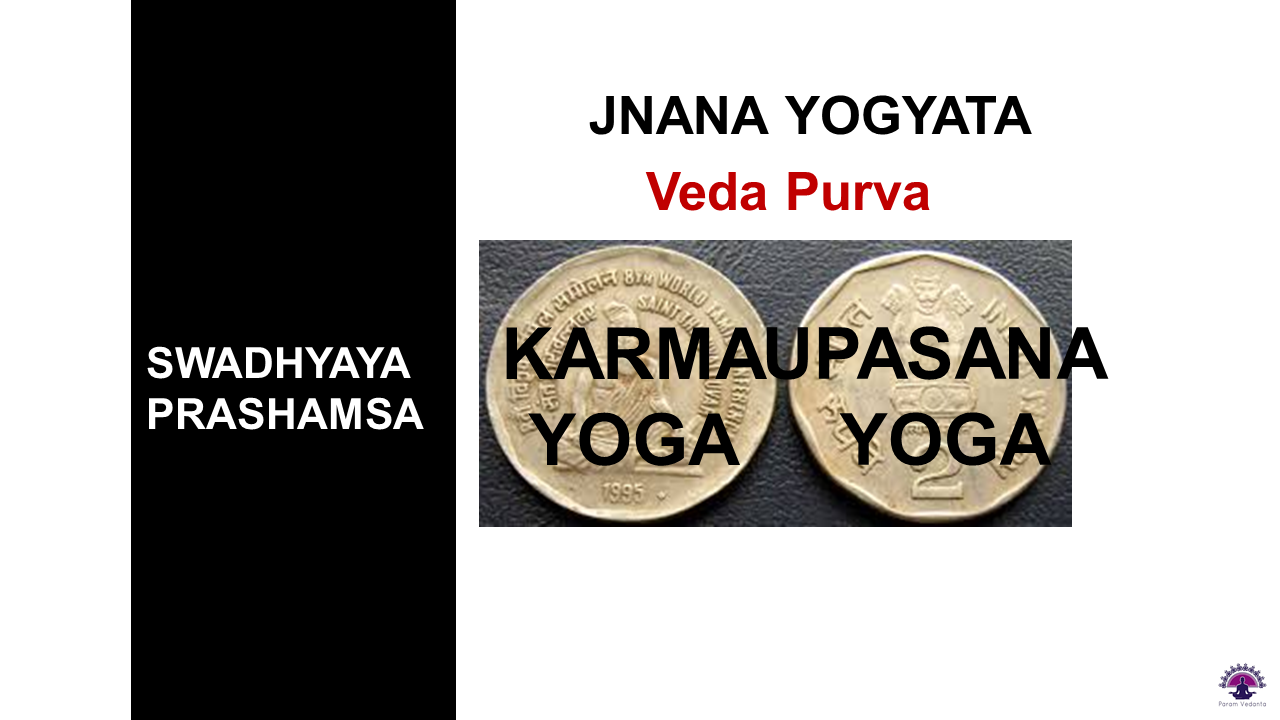

He should also take necessary actions for self-preservation. A householder should work hard to earn wealth through proper means for the good of society – that way, he pursues the path of dharma. Dharma is the most important value when conducting duties in the world, and is the regulating principle behind artha and kama. Lesson 11 is discussed: Instruction from teacher to departing students. The seeker asks for inner joy and spiritual common sense to pursue the path of truth and dharma. All deities are different manifestations of one Absolute Reality. Taittiriya Upanishad starts with a prayer to Vedic deities, such as Mitra, Varuna, Vayu and Indra. There are 31 anuvakas in Taittiriya Upanishad. Upanishads are the essence of the Vedas and constitute philosophical ideas that are relevant to people from all religions and cultures. Each veda has 4 divisions: (1) Samhitas (2) Brahmanas (3) Aranyakas and (4) Upanishads. Story of Yajnavalkya is discussed in the context of Krishna-yajur-veda and Shukla-yajur-veda. Vyasa classified into four groups: Rig veda, Yajur veda, Sama veda and Atharva veda. Triple foundation of Indian philosophy: (1) Upanishads, which form the foundation (2) Gita, which provides the interpretation and (3) Brahmasutras, which provides the logical analysis This discourse was given on Jat the Lake Tahoe Retreat run by the Vedanta Society of Northern California by Swami Tattwamayananda.


 0 kommentar(er)
0 kommentar(er)
